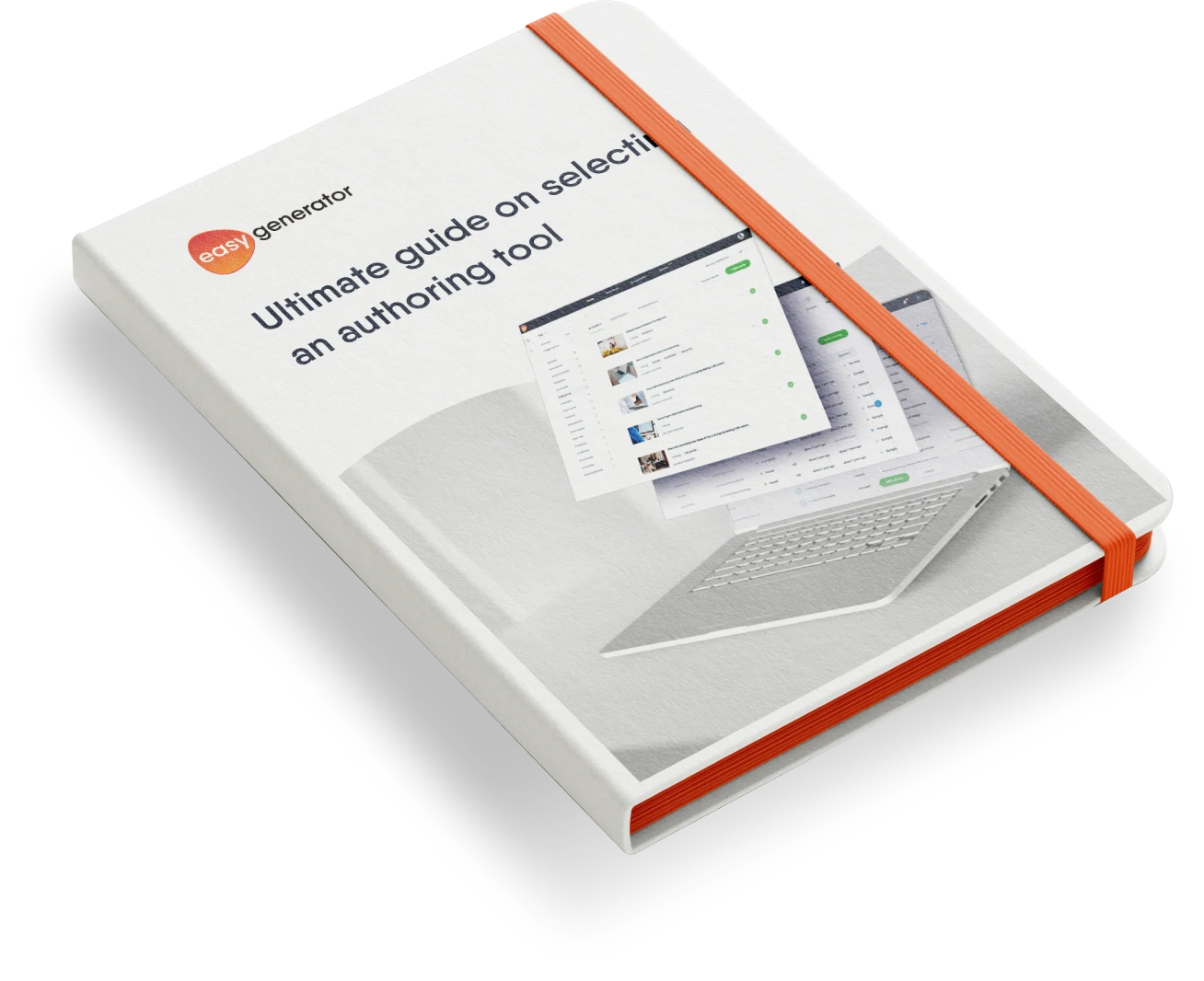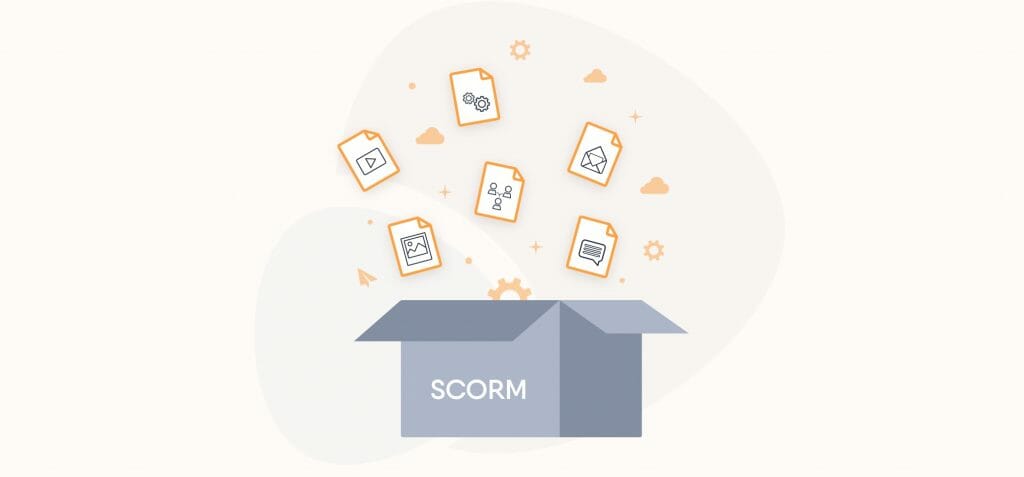Cmi5: What is it and why do you need it? Cmi5 vs. SCORM
SCORM and xAPI each have strengths, but neither fully meets modern e-learning needs. Cmi5 bridges the gap, offering structured LMS tracking with the flexibility to capture learning anywhere.

E-learning standards have come a long way since SCORM was introduced in 1999. While SCORM set the foundation for tracking online learning, it had limitations—especially when it came to flexibility and tracking beyond a Learning Management System (LMS). xAPI (Tin Can API) took things a step further by allowing organizations to track learning experiences outside the LMS, including informal learning. However, xAPI lacked a clear structure for managing LMS-based learning.
This is where cmi5 comes in. As a set of rules that defines how xAPI content should work within an LMS, it offers the best of both worlds. It provides the structure of SCORM while leveraging xAPI’s advanced tracking capabilities. In this article, we’ll explore what cmi5 is, how it works, and why it matters for modern learning environments.
What is cmi5?
The world of e-learning roughly knows two standards: SCORM and xAPI, which was initially named Tin Can. But xAPI offered so many possibilities, that it needed a set of rules to be able to have focus and impact. That set of rules is what we now call cmi5. Short for “computer-managed instruction”, it’s able to track learner results, just like SCORM.
How does cmi5 work?
Cmi5 connects different learning technologies by defining how content launches, tracks progress, and stores results within an LMS and a Learning Record Store (LRS). A common cmi5 example is launching a compliance training module from an LMS while tracking offline progress.
Unlike SCORM, which tracks activity only within an LMS, this model allows learning experiences to happen anywhere—inside or outside the LMS—while ensuring that data flows smoothly into the system.
How cmi5 interacts with an LMS and an LRS
- A learner launches a course from the LMS: the LMS sends a launch request to the content package, following cmi5 rules.
- The content communicates with the LRS using xAPI: once the learner starts interacting with the course, xAPI statements record activities such as course progress, quiz scores, and completion status.
- The LRS stores learning data: it collects and stores all xAPI statements, creating a detailed learning history.
- The LMS retrieves progress data from the LRS: it accesses relevant xAPI data to update completion status and scores.
- Data syncs even if learning happens offline: if a learner completes a course offline, cmi5 ensures the data syncs once the device reconnects to the internet.
cmi5 vs SCORM
SCORM and xAPI are probably the best-known format options for tracing and tracking learners’ results. Developed in 1999, SCORM provided the first protocol for tracking learning activity across platforms. SCORM-compliant content became trackable across any LMS that supported it.
A problem with SCORM, however, was that courses could only be taken by students located in the area of the server. Cmi 5 solves that: learners don’t have to be in the same location to take a course—they don’t even have to be online. It can track sources outside the LMS, like apps, social learning, and more. The same goes for tracking their learning. They can take courses offline, and it will send data to the LMS once there is an internet connection.
cmi5 vs xAPI
Like SCORM, xAPI is a learning protocol that allows you to track learning-related activity. Unlike its predecessor, it can track learning in pretty much any context. xAPI’s ability to follow informal learning and capture activities outside the LMS made it particularly popular with L&D teams. It provided them with a detailed picture of a learner’s experience.
Although xAPI allows you to collect an enormous amount of data, it isn’t structured enough to decide what type of content should go inside an LMS. This is precisely where cmi5 now takes the stage. It is a set of rules that adds more structure to xAPI and your LMS.
The benefits of cmi5
Cmi5 combines the capabilities of SCORM and xAPI to offer a more complete specification. Acting as the bridge between LRS and LMS, it has several major advantages.
Learn more about the differences between LRS and LMS.
Next-generation framework
Cmi5 was designed using the xAPI specification with the latest generation of e-learning in mind. This makes it lighter, more efficient, and scalable. Using superior technology, it can be used across different platforms, web browsers, and devices.
Simplified specification
In so many ways, cmi5 picks up where SCORM and xAPI left off with a simpler model for data tracking. Thanks to its interoperability, content creators no longer have to worry about compatibility between different learning units and LMS. True to its name, cmi5 creates a truly seamless, computer-managed experience.
Global access to content
SCORM specifies that all content and the LMS must be hosted on the same domain. This makes it less than ideal for sharing content across different geographic locations. Cmi5 provides a more global solution for distributing learning across different locations.
It allows you to import course structures onto the LMS while the learning materials may be hosted elsewhere. Once you have a content delivery network in place, learners have easy access to content wherever they are.
Challenges and limitations of cmi5
While cmi5 brings many advantages, it’s not without challenges. Organizations adopting this model should be aware of a few key limitations:
Limited LMS support
Not all LMSs fully support this model yet. Since SCORM has been the dominant standard for years, some platforms still need updates to handle cmi5 content properly. Before switching, organizations should check if their LMS is compatible.
Technical complexity
Implementing cmi5 requires more technical expertise than SCORM. While SCORM packages are relatively easy to set up in an LMS, cmi5 content needs to follow xAPI structures and interact with an LRS. L&D teams may need developer support to ensure a smooth transition.
Challenges with SCORM integration
Many organizations still have a large library of SCORM-based content. Since cmi5 follows a different framework, transitioning from SCORM can require content updates or migration strategies to maintain compatibility.
Despite these challenges, cmi5 offers a future-proof solution for tracking learning experiences inside and outside an LMS.
Conclusion: cmi5 is the best of both worlds
Cmi5 bridges the gap between SCORM and xAPI, giving organizations the flexibility to track learning across multiple environments while maintaining LMS structure. By overcoming SCORM’s location restrictions and adding more structure to xAPI, it offers a modern, scalable way to manage e-learning content.
While adoption challenges remain, the benefits of cmi5 make it a strong choice for organizations looking to future-proof their training programs. If your LMS supports this model, implementing it can help you gain deeper insights into how employees learn—whether they’re taking formal courses or engaging in informal learning experiences.
-
 14 day trial with access to all features. Start with variety of course templates.
14 day trial with access to all features. Start with variety of course templates. -
 Get unlimited design inspirations. Level up your courses.
Get unlimited design inspirations. Level up your courses. -
 Upload your PowerPoint presentations. Get instant courses created.
Upload your PowerPoint presentations. Get instant courses created.





